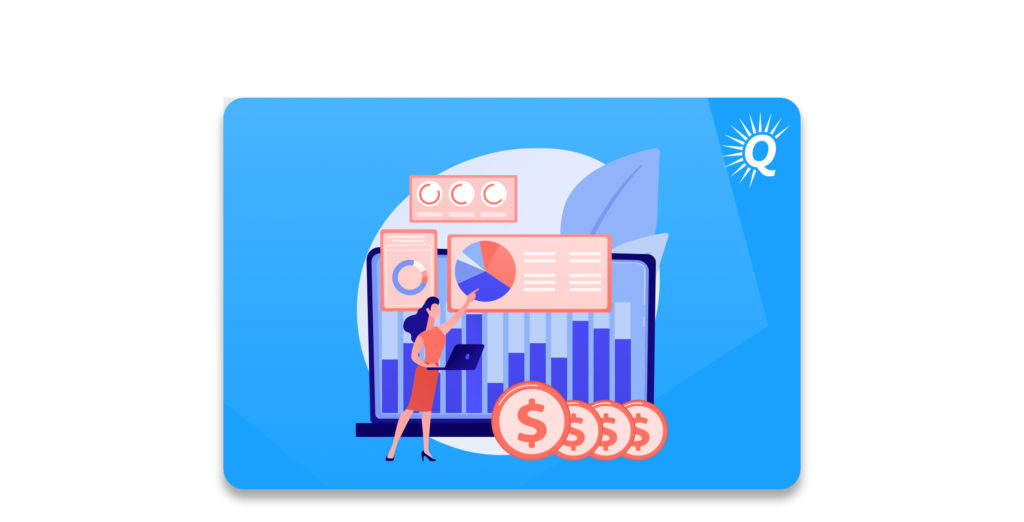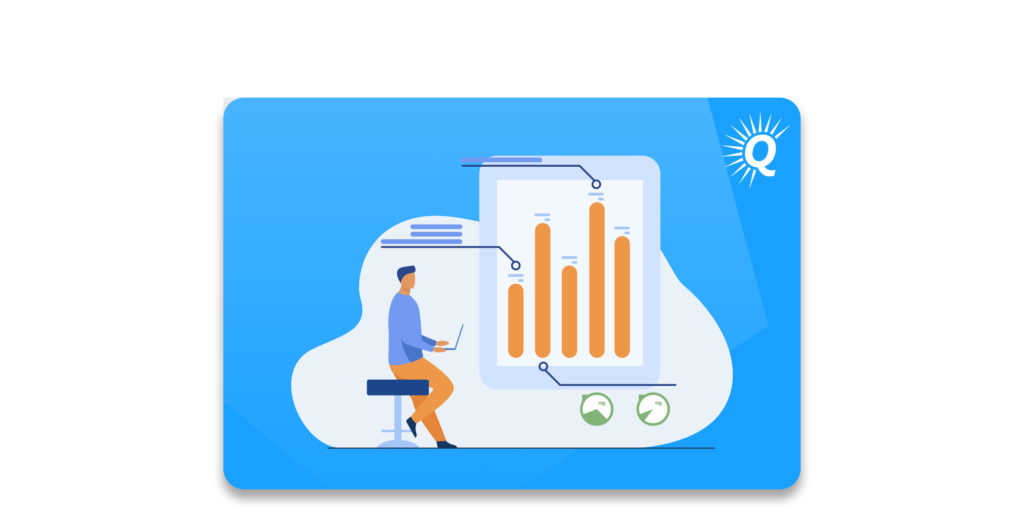Topics:
Never Miss a Beat - Get Updates Direct to Your Inbox
FILTER:


Amazon FBA Buyers’ Checklist for Due Diligence
By Quiet Light


You’ve done your research, evaluated the marketplace, and now you’re ready to purchase an Amazon FBA business! Congratulations, taking over an established Amazon business offers numerous benefits. With incredible growth opportunities and excellent ROI potential, it’s no surprise that Amazon businesses are well sought after in the marketplace. However, first, you must complete several key steps, including due diligence.
Before jumping all in and completing the deal, it’s important to make sure that your investment is really as promising as it appears on the surface. Afterall, most businesses have a lot of moving parts and not every detail is easily visible.
This article will provide an in-depth guide to conducting due diligence for Amazon FBA business acquisitions. By following these steps, you’ll be in a much better position when examining the asset you’re considering acquiring.
Purpose of Doing Your Due Diligence When Buying an Amazon FBA Business
Due diligence is one of the most important steps when acquiring a new Amazon FBA business.


More than likely, purchasing an online business represents a significant investment, both financially and personally. Due diligence helps to ensure that you have a complete understanding of the FBA business you’re purchasing. This allows you to make a fully informed decision.
In other words, the due diligence process is an opportunity for you to learn as much as possible about the business in question. If you skip this process, you’ll risk encountering a variety of unpleasant surprises that could threaten your ability to succeed.
Typically, there are a few key areas that you should examine during the due diligence process. Most buyers will want to make a due diligence checklist which includes all of these items:
- Accounting practices
- Financial statements verified by third-party records
- Addbacks
- Trends
- Documentation
- Key Seller Metrics
- Competition
- Supplier agreements


One of the first areas to look at is the accounting practices used by the previous owner.
Why Accrual Accounting is Important
For an e-commerce business, accrual accounting is a must. Simply put, accrual accounting provides significantly greater accuracy. It allows you to understand the business’s costs, profitability, trends, and seasonality.
For this reason, it’s important to look at the accounting practices used by the owner during the due diligence process.
Of course, the alternative to accrual accounting is cash accounting. Although cash accounting is acceptable for certain businesses, it is not effective when it comes to Amazon FBA. Cash accounting records revenue and expenses when money changes hands. Unfortunately, this can lead to a distorted view of what is taking place within the business.


For example, let’s say that the Amazon business purchases $45,000 of inventory at the beginning of February and it lasts for three months. In this situation, the business will record a $45,000 inventory expense in February and then zero inventory expenses for March and April.
This will lead to financial statements that show an artificially low profit margin for February. Similarly, it will show an inaccurately high profit margin for the following two months. For this reason, we say that cash accounting leads to “lumpy earnings” for e-commerce businesses.
With accrual accounting, you record revenue and expenses at the times you incur them, rather than when cash changes hands.
In other words, instead of showing a $45,000 inventory expense in February and then no expenses the following two months, an accrual accounting record might show a $15,000 inventory expense in February, another $15,000 inventory expense in March, and a third inventory expense of $15,000 in April (assuming sales were exactly the same all three months).
Accrual accounting also allows other trends to become visible, such as growth, decline, or seasonality.
Due Diligence: Third-Party Verification of Financial Statements
You can see many key aspects of the business through the financials.


Financial statements tell the story of the Amazon business you’re considering purchasing. They reveal what products are generating the most revenue, what the business’s expenses are, and what the trends are within the business.
In general, buyers should request financial statements for the previous twenty-four months during due diligence. This allows buyers can gain a deep understanding of the Amazon business strategy employed by the seller.
Financial statements are only as reliable as the sources they’re derived from. For this reason, buyers should have access to enough third-party records to completely recreate the financial statements that the seller presents.
A few common third-party financial verification sources include:
- Bank statements
- Statements from advertising accounts
- Vendor invoices
- Amazon Seller Central reports
Looking at Bank Statements During Due Diligence
Bank statements can serve as an effective way to verify financial statements. All income and expenses listed on the Profit and Loss should be visible on the business’s banking statements.


In cases in which the previous owner has used a personal bank account or multiple business accounts, this process can be a bit tedious. However, it is the seller’s responsibility to track down all third-party records. They should ensure that they can verify the financial statements presented to the buyer.
For Amazon businesses that drive outside traffic through ad campaigns (i.e. Facebook or Google), buyers should request statements generated through the ad accounts on their respective platforms. Doing so can fill in key metrics concerning ad expenses and advertising ROI.
Vendor invoices are another way to verify the business’s financials. They should also be compared to banking statements to ensure accuracy.


Reports generated in Seller Central can provide crucial insights into many key metrics relating to the business. This is expected during the due diligence process.
Evaluating Addbacks
Almost all Amazon business owners will create an addback schedule when preparing to sell.
An addback schedule is a list of discretionary and one-time expenses that are “added back” to the businesses Discretionary Earnings. In other words, any expenses included on the addback schedule should not be part of the business’s required expenses in the future.
The addback schedule is one item that commonly causes disagreement between buyers and sellers. As a buyer, it’s critical to look carefully at the addback schedule in order to determine its accuracy.
Many addback expenses are legitimate and should not be contested. For example, if the addback schedule includes $50,000 of discretionary travel expenses that were incurred during a five-month visit to Bali, it’s probably safe to assume that the business does not require the next owner to spend $50,000 doing yoga and surfing on a tropical island in order for the business to succeed.
On the other hand, if the seller includes a $10,000 expense to redesign the website, it might be spart to ask questions to determine whether or not it belongs on the addback schedule. If it turns out that the website redesign is truly a one-time expense, then perhaps you should agree. However, if further inquiry reveals that the business has incurred a $10,000 redesign fee every year to accommodate consistent growth, then it might not qualify as an addback.


If you have questions about what should or should not qualify as an adback, it’s probably a good idea to speak with a qualified advisor who is familiar with the process.
Examining Key Trends During Due Diligence
One of the key areas that financial statements reveal is trends.
Before buying an Amazon FBA business, it’s important to examine the trends that could affect its future profitability. Some of these trends are internal, while some are external.
A few key trends to look at include:
- Revenue growth
- Profitability trends
- ACoS
- Market trends
Two of the most obvious trends to look at are revenue growth and profitability.
Revenue growth generally indicates that the business is succeeding in its efforts of reaching more customers and driving sales. Of course, this is generally a very positive sign. It suggests that the business is effectively marketing its products to its target customers.
The business’s profit trend is another important metric to evaluate. If a business’s margin is steadily shrinking over time, there could be trouble. Perhaps it’s a sign that the business is being forced to reduce its prices in order to respond to competition. Such a trend could be concerning from an investment standpoint.
Advertising Due Diligence
ACoS trends often correlate with profitability and reveal how much revenue each advertising dollar generates. By looking at the ACoS trend for each Amazon product that the business is selling, you’ll be able to get a good idea about whether the business’s marketing efforts are becoming more or less effective over time.
Sometimes, the trends within an Amazon FBA business are based on the quality of its products and the competency with which it is managed. At other times, there are changes in the overall market that are affecting the business’s performance.
Before buying any business, it’s a wise idea to look at market trends that could impact the future success of the business. Google Trends is one tool that can reveal the growth or decline of various markets based on changes in keyword search volume.


Although Google Trends doesn’t correlate exactly with what’s performing well on Amazon, it does show more broad changes in overall market demand. For more Amazon-specific sales data and trend metrics, buyers can use software tools services. Jungle Scout and Helium 10 are good options for exploring market trends.
Documentation
Even if a business is highly profitable, it’s important to understand what is driving that profitability. Additionally, you should understand how easily you’ll be able to maintain or grow it once you’re in charge. If the business’s success hinges on the specialized knowledge of the current owner, it might be challenging to take over.
When it comes to taking over a new business, it’s essential to have clarity in order to succeed. If you’re stepping in to fill the shoes of a disorganized owner, it may be very difficult (and frustrating) to try to figure out what needs to be done.
It’s important to examine the documentation and systems that exist within the business. As common sense suggests, it’s much easier to succeed when a business is well documented and already has effective systems in place.
Unfortunately, not every business is built to be sold. There are a lot of owners out there who have built impressive companies but have failed to ensure that they are easily transferable. After all, if the current owner handles everything themself, they may have never gotten around to writing things down.
The Importance of SOPs
In general, it’s highly preferable for a business to have detailed Standard Operating Procedures (SOPs). These should explain all of the crucial responsibilities within the business.


For Amazon businesses, areas in which SOPs may be helpful include:
- Managing and ordering inventory
- Responding to customer service inquiries
- Quality control practices
- Making product selection decisions
- Managing employees and contractors
- Managing ad budgets
As a new seller, if you’re able to receive a detailed manual that covers each of the areas, you’ll be in a much better position. Stepping in and running the business will be much easier once you sign Asset Purchase Agreement. Figuring out the business’s documentation practices ASAP can prevent months of confusion. In some cases, it can also help you avoid tension with the previous owner.
Buy a Profitable Online Business
Outsmart the startup game and check out our listings. You can request a summary on any business without any further obligation.
If you encounter a business that looks promising in every way other than its documentation practices, it may be possible to negotiate with the seller and request that they create detailed SOPs before the transfer of ownership takes place.
Key Seller Metrics To Look For During Due Diligence
Amazon’s Seller Central also allows sellers to generate a variety of detailed performance reports. These can show numerous key metrics regarding the health and success of the seller account in question.
Before acquiring an Amazon FBA business, it’s a good idea to look closely at the following key metrics while conducting due diligence.
- Reviews
- Product Rankings
- Seller Rating
- Inventory Performance
- Order Defect Rate
- Fulfillment Performance
- Conversion Rate
Reviews
Reviews are the most obvious (and easiest) metric to look at when evaluating an Amazon business’s products.
There are two primary metrics to consider when looking at product reviews—quantity and quality.
Businesses that have many reviews often enjoy a comforting level of defensibility against competition. This is especially true for Amazon businesses whose products are expensive since new sellers would need to invest heavily in giveaways and advertising campaigns in order to acquire reviews and gain traction.


Review quality refers to the average star rating of a business’s products. Of course, as a buyer, you want to look for businesses that have products with both a high quantity of reviews as well as a high star rating.
Since each product category is different, it’s important to compare each product to its competitors. A brand new kind of product with 1000 reviews may be a category leader, but a product in an established category with 1000 reviews might be far below average.
Product Rankings
The Best Seller Rank (BSR) reflects a product’s sales volume relative to others in its category. For example, a #1 BSR means that the product is the #1 best selling product in its category.
Although there is often a correlation between BSR and revenue, it is certainly not a 1:1 correlation since BSR does not take products’ listing price into consideration. In other words, a set of pencils may sell more units than a journal, but if the journal sells more units, it might have more overall revenue.
Thinking of Selling Your Business?
Get a free, individually-tailored valuation and business-readiness assessment. Sell when you're ready. Not a minute before.
Like all of these metrics, the BSR of a given product doesn’t indicate the success of a product or seller all by itself. Rather, it is one element that reflects the relative sales volume when compared to others.
Seller Rating
Each seller is given a seller rating which reflects the overall performance of the seller account. It can range from one to 100 and is based on a few key metrics including cancelations, customer inquiries, shipping time, and reviews.
A high rate of inquiries or cancellations can be an indication of confusion or dissatisfaction among customers and lead to a reduced seller rating. On the other hand, Amazon businesses that maintain low cancellation and inquiry rates are likely providing clear descriptions and instructions that accompany high-quality products.


Businesses that ship products directly to their customers (FBM) also are evaluated based on their adherence to the shipping timeframes that they promise. While it’s critical for sellers to provide timely shipments when doing FBM, this metric isn’t relevant for those who sell exclusively via FBA.
Review ratings are another element that factor into the seller rating. Higher review ratings increase the overall seller rating, while lower review ratings lower it.
Inventory Performance
The Inventory Performance Index (IPI) is a score that reflects the efficiency with which an Amazon business manages on-hand inventory. Businesses that hold excessive quantities of inventory for long periods of time will have a lower score, while those that maintain appropriate levels will have a higher score.
An IPI of 500 or more is considered to be appropriate. If the IPI drops too low, the business may be required to pay additional inventory storage fees.
Order Defect Rate
The order defect rate is an important metric that Amazon takes very seriously. Therefore, it’s important to ensure that the business’s order defect rate is within Amazon’s acceptable standards in order to avoid the possibility of severe consequences.
If a business’s order defect rate rises above 1%, Amazon may provide a warning or possibly even suspend the seller account.
Fulfillment Performance
The fulfillment performance score reflects several key metrics including the order defect rate, pre-fulfillment cancellation rate, and late shipment rate.


Targets for each of these metrics include:
- > 1% order defect rate
- > 2.5% pre-fulfillment cancellation rate
- > 4% late shipment rate
If you’re evaluating a business that exceeds these benchmarks, it might be wise to investigate product quality and logistics systems.
Conversion Rate
The conversion rate reflects what percentage of product page visitors decide to purchase the product. Although conversion rates vary by category, the overall average is right around 12%.
When looking at a business, it’s important to take note of each product’s conversion rate. While a high conversion rate is great to see, a low one can spell opportunity for a new owner.
Knowing a business’s conversion rates can help you to determine if any further investments will be required following the acquisition. If due diligence reveals that the business has low conversion rates, you may want to dedicate some capital to revamp the product pages in order to increase profitability.
Due Diligence: Understanding The Competition
Knowing the Amazon business’s competitive landscape is an essential part of understanding the asset you’re acquiring.


Although there are many commonalities between different Amazon businesses, the competition that each faces can vary dramatically. There are few key questions to answer when evaluating an FBA business acquisition opportunity:
- What is the business’s position in the marketplace?
- How defensible are its products?
- What competitive threats exist?
The first variable to examine is the business’s position in the marketplace.
What is the Business’s Competitive Positioning?
For each product category and search term, there are typically products that are the clear leaders, those that are practically irrelevant, and then all those in between. Before buying a business, it’s a good idea to look carefully at how a business’s products compare to those it’s competing against.
One simple way to get a basic idea of how well a business’s products are doing is to go to Amazon.com and search for the product’s main key words. If the product relies on long tail keywords, be sure to search for those as well.
See where the business’s products show up in the search results and then compare them to the other listings. Software such as Helium 10 or Jungle Scout can make it easy to extract important data about each product that appears in the search results.
For example, after downloading the Jungle Scout extension, simply search for “toothbrush.” After the results appear, click on the extension to see a full list of key data extracted from each product including number of reviews, review ratings, BSR rank, and rough estimates of each products’ monthly sales volume and revenue. The averages will also appear above the list.
Do a Competetive Analysis
Identify the product(s) of the business you’re researching and compare its stats to the other products in the search results.


It’s important to note that each successful product will likely appear in the search results for several different keyword searches, and each set of results will reveal different competing products. Therefore, it’s wise to evaluate each product based on it’s competitive positioning on each page on which it appears.
Of course, the most desirable products will have the most reviews in their respective categories and an average rating of five-stars.
Additionally, it’s a good idea to pay attention to the products’ price points. Is the business selling premium products with high margins? Are they selling inexpensive products and competing on price point? Or, are they somewhere in the middle?
A business’s products’ competitive positioning will likely affect profitability, as well as inform what sales strategy should be used in order to succeed.
How Defensible Are the Business’s Products?
There is a wide range of defensibility among different Amazon products.
There are two primary variables that determine how defensible a given product is against the competition: reviews and cost.
Products that are cheap to produce and have few reviews are relatively easy for competitors to replicate. For example, if a business sells postcards and most products in that category only have 30 reviews, it’s going to be extremely easy for other sellers to start competing with you.
On the other hand, if a business’s products are expensive to produce and every product in their category has 5,000 reviews or more, it’s going to be massively difficult and expensive for new competitors to emerge. Even if a new seller is capable of developing a revolutionary product, they’ll need to invest heavily in inventory and then spend a bunch of money in advertising and promotions to drive sales, generate reviews, and gain traction.
Buy a Profitable Online Business
Outsmart the startup game and check out our listings. You can request a summary on any business without any further obligation.
Some Amazon sellers are able to succeed by launching a large quantity of inexpensive products in unsaturated markets. While this is a great strategy to grow a business with minimal capital, it might not provide the greatest level of security against new sellers who might enter the market.
Other Amazon businesses might have less revenue but their products are highly defensible, making them more stable from an investment standpoint.
Competitive Threats
In addition to evaluating a business’s competitive positioning and how defensible its products are, it’s a wise idea to research any specific competitive threats that could cast doubt on the long-term success of the business.
If the business operates in an industry in which there is one or more competitors emerging with a clear advantage, that should be considered in your decision making process.
Additionally, it’s very unfortunate, but some businesses have competitors that ‘mess with it.’ Although Amazon has frameworks in place to protect registered brands, unethical competitors can still be a major nuisance and headache.
Regardless of what Amazon business you acquire, implementing effective forecasting tips can help you gain an additional competitive advantage.
Due Diligence: Looking At Your Supplier Agreements
Supplier agreements provide important details that affect cash flow, legal liability, and profitability.
A few key elements to look for in supplier agreements include:
- Cost of inventory
- Payment terms
- Legal protection
Cost of Inventory
One of the first items to consider when looking at supplier agreements are inventory costs. The cost of each product will dramatically affect the profit it earns on each FBA shipment.
In addition to understanding each products’ production costs, it’s important to learn as much as you can about any cost trends that could affect the future profitability of the business’s products.


For example, if a product’s cost has been steadily increasing each quarter for the past two years, it might be concerning from an investment standpoint. What would happen if the trend continues under your ownership?
Payment Terms
The payment terms agreed between the Amazon business and their suppliers will have a significant impact on the business’s cash flow.
A business that has Net 30 or even Net 60 payment terms is able to leverage its capital much more efficiently in order to invest in more inventory at any given time, and thus, experience faster growth. On the other hand, a business that doesn’t have such terms will need to rely on its cash reserves to fund all inventory purchases.
It’s important to note that some suppliers may not extend the same payment terms to a new owner as they did to the previous one. Sometimes, it’s necessary to build a relationship with them or provide proof of creditworthiness first.
Legal Protection
In addition to understanding the business’s inventory costs and payment terms, it’s important to examine the legal protections that the supplier agreements offer.
If you have any questions about the legal protections of the business’s agreements, it could be smart to have your attorney review them. Do they protect the buyer against defective batches of inventory? Do they specify penalties for late deliveries? Having clear contracts in place can ensure that suppliers are incentivised to uphold their end of the bargain.
Due Diligence: Determining The Fees Of An Amazon FBA Business
There are several different Amazon marketplace fees that impact the profitability of an Amazon business. Digging into the business’s Amazon fees during the due diligence process can help you gain a clear understanding of what ongoing platform costs you should expect to experience as the new owner.
Buy a Profitable Online Business
Outsmart the startup game and check out our listings. You can request a summary on any business without any further obligation.
Most Amazon businesses encounter the following fees:
- A monthly subscription fee
- Selling fees
- Referral fees
Amazon’s Professional Selling Plan costs $39.99 per month and provides a vast variety of powerful selling tools within the Seller Central account.
Selling fees are all costs associated with fulfilling orders to the business’s customers. These include shipping fees, gift wrapping fees, and any other cost required to deliver the products to customers.
Sellers are also required to pay a referral fee for each product sold. Referral fees vary by each product category and are based on a percentage of the sales value.
Check out the Selling on Amazon Fee Schedule to see the referral fees for each product category, as well as several other fees that apply to certain products and businesses.
In addition to researching the general fee structure that applies to the business you’re considering purchasing, it’s also a good idea to examine the records available within the business’s Seller Central account.
In Conclusion
When navigating the due diligence process, it’s important to be thorough and complete to ensure that no detail is overlooked. Whether you’re reconstructing the seller’s discretionary income using third-party financial statements or examining the business’s competitive environment, be sure to learn as much as possible about the Amazon business you’re about to purchase. By doing so, you’ll be ready to lead your newly acquired asset to success as soon as you’re in charge.





